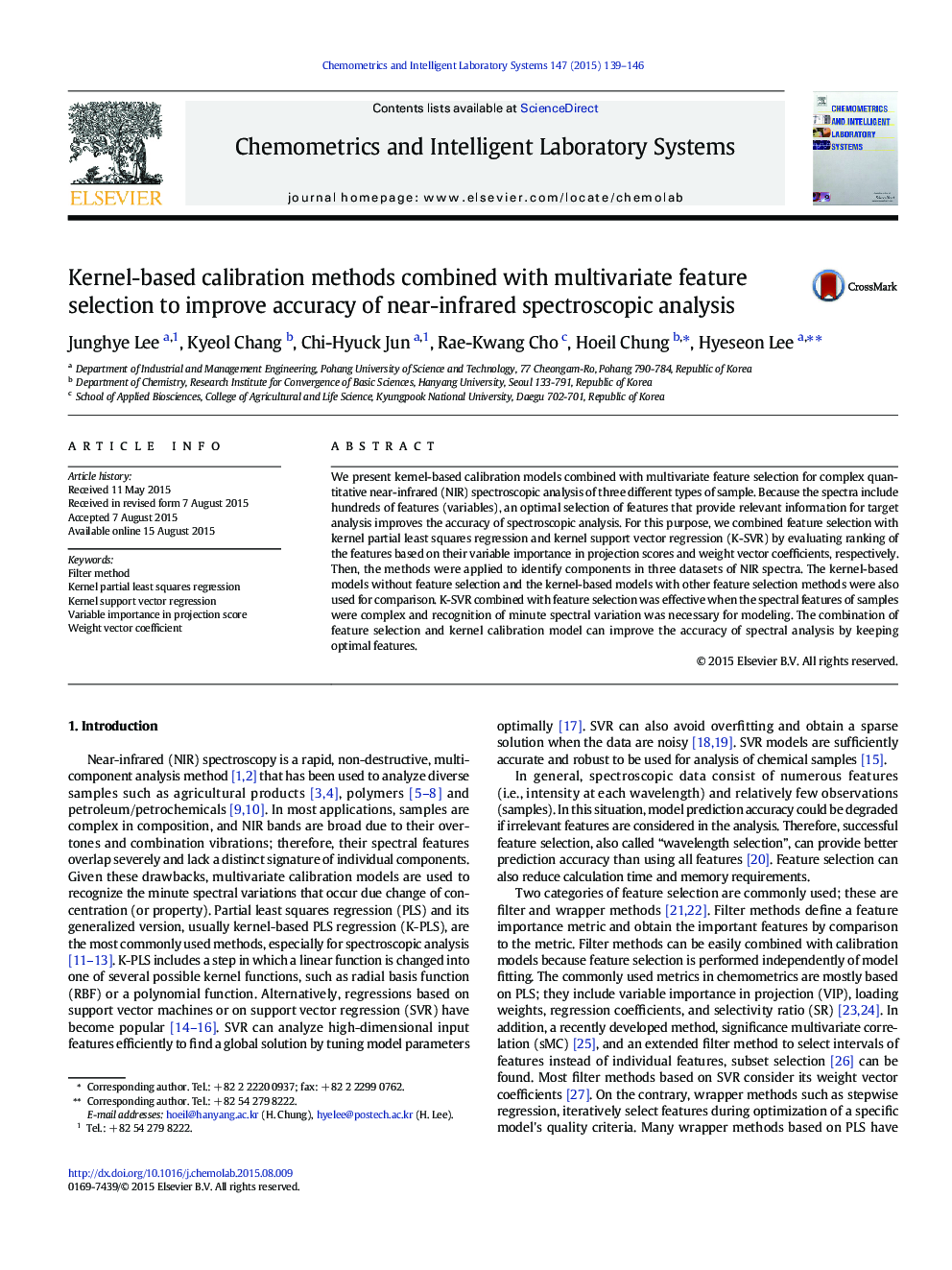| Article ID | Journal | Published Year | Pages | File Type |
|---|---|---|---|---|
| 1180375 | Chemometrics and Intelligent Laboratory Systems | 2015 | 8 Pages |
•Feature selection embedded kernel-based calibration methods are proposed.•K-PLS-VIP and K-SVR-WV were used for NIR quantitative analysis of samples.•Feature selection helped to choose optimal features from complex sample spectra.•K-SVR-WV improved accuracies of NIR measurement of naphtha, etchant solution and apple samples.
We present kernel-based calibration models combined with multivariate feature selection for complex quantitative near-infrared (NIR) spectroscopic analysis of three different types of sample. Because the spectra include hundreds of features (variables), an optimal selection of features that provide relevant information for target analysis improves the accuracy of spectroscopic analysis. For this purpose, we combined feature selection with kernel partial least squares regression and kernel support vector regression (K-SVR) by evaluating ranking of the features based on their variable importance in projection scores and weight vector coefficients, respectively. Then, the methods were applied to identify components in three datasets of NIR spectra. The kernel-based models without feature selection and the kernel-based models with other feature selection methods were also used for comparison. K-SVR combined with feature selection was effective when the spectral features of samples were complex and recognition of minute spectral variation was necessary for modeling. The combination of feature selection and kernel calibration model can improve the accuracy of spectral analysis by keeping optimal features.
